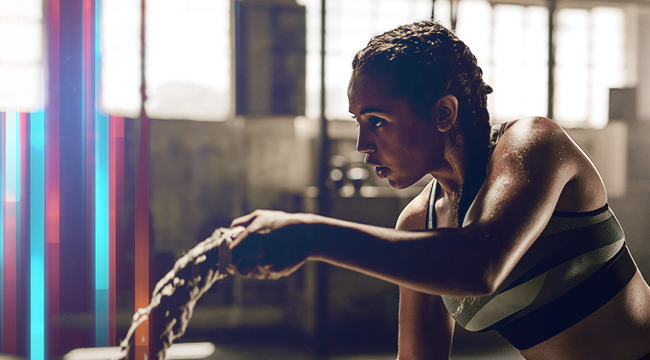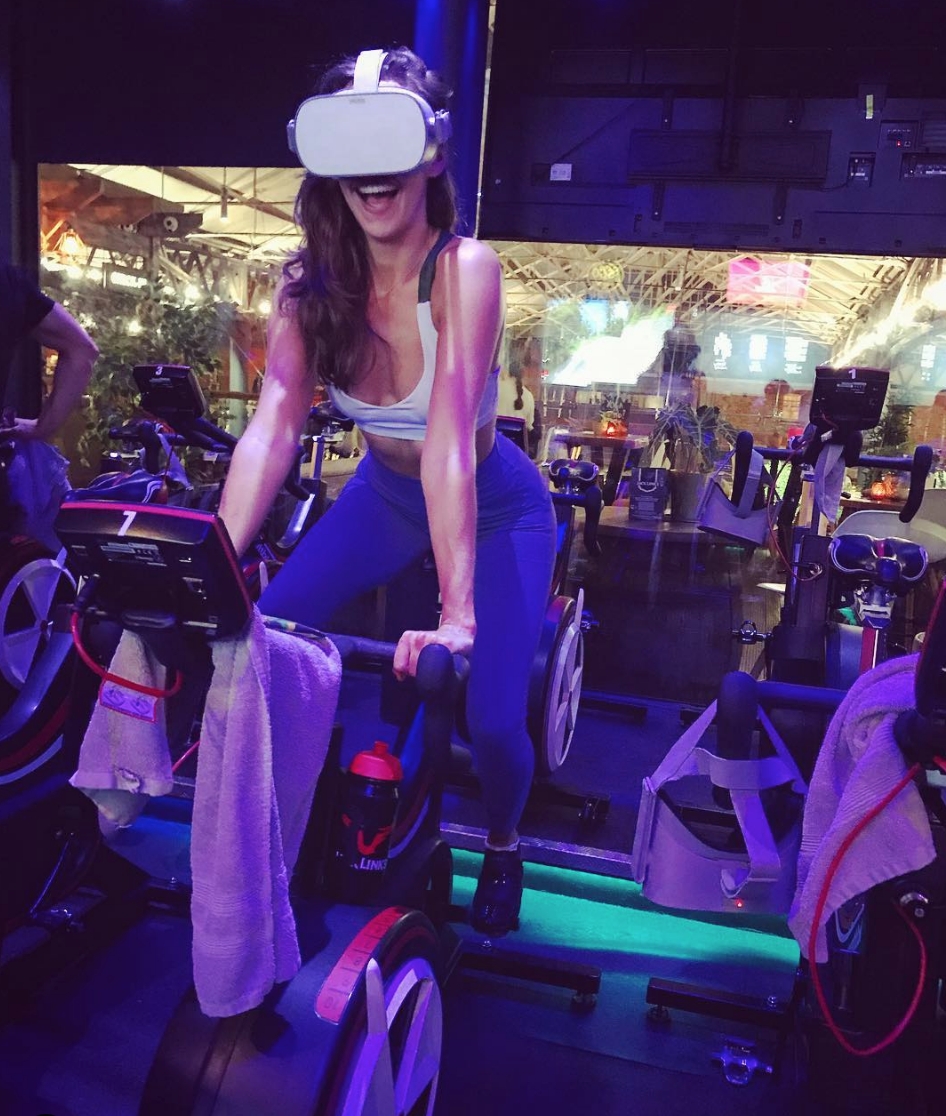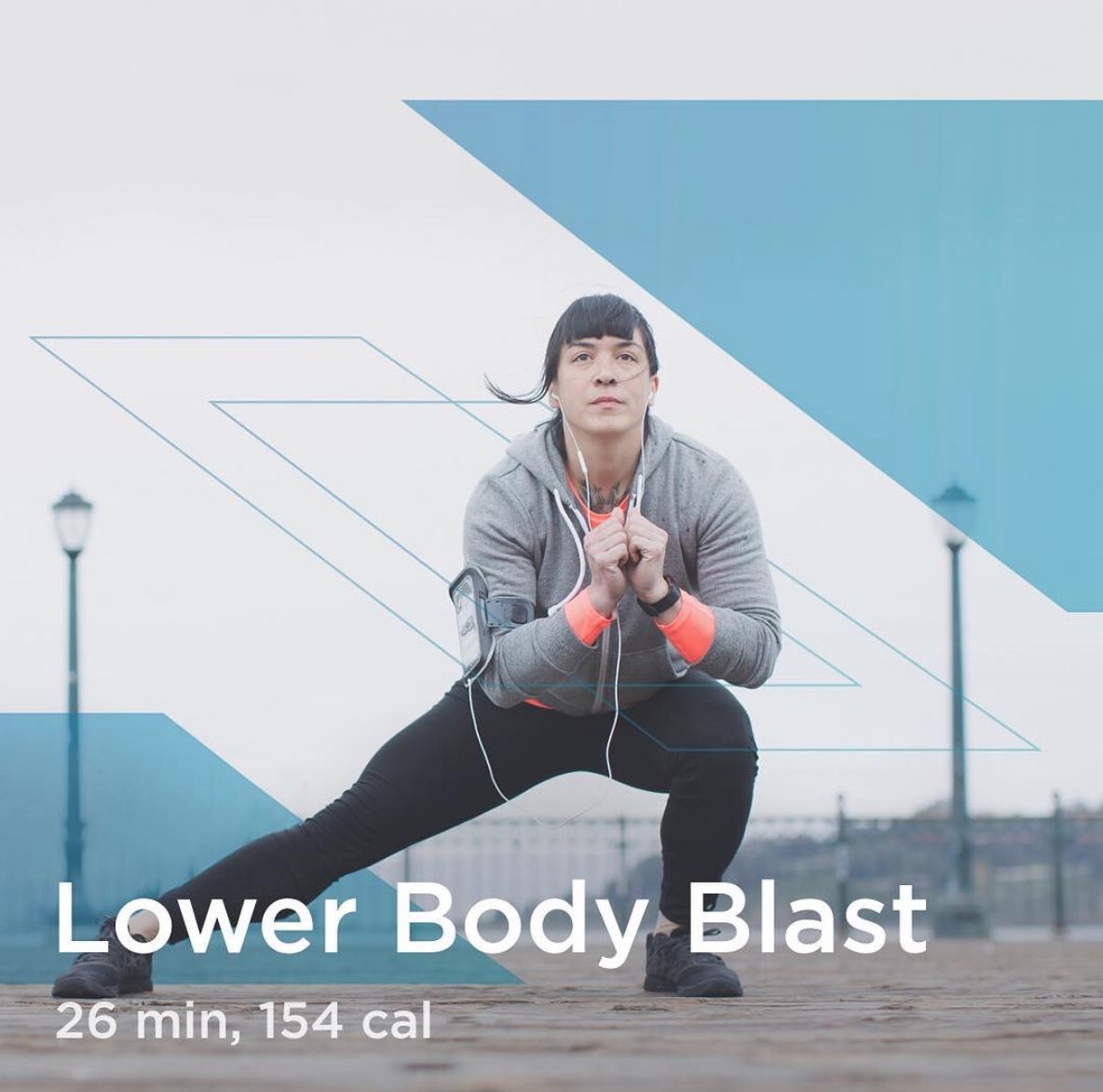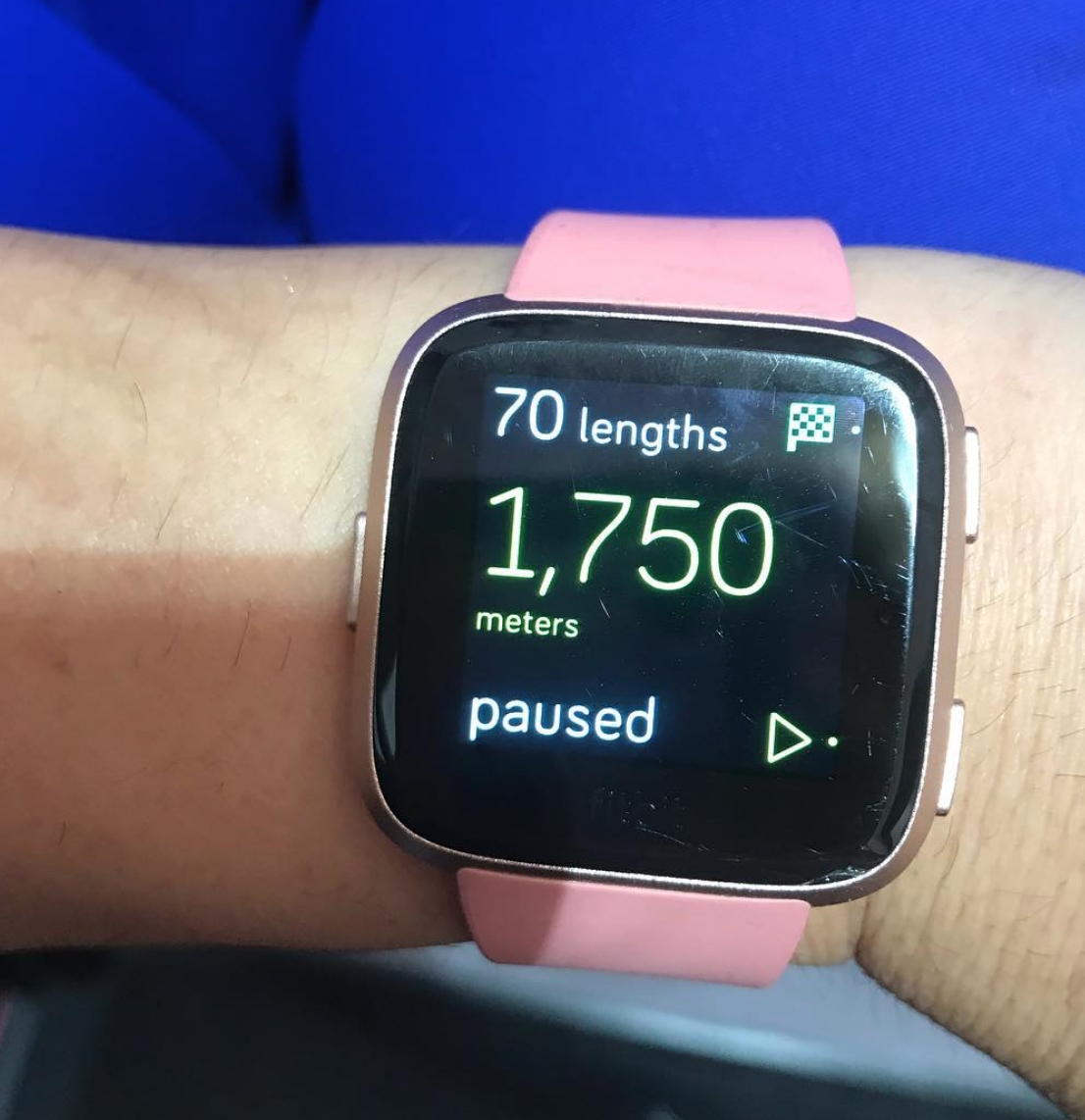
“I’m going to spin class.”
The announcement was made by my sister, currently standing in the middle of her living room.
“Uh, now?” I asked. She was already wearing her spin shoes.
“Yeah, it starts in five.”
I gave her the side-eye. How was she going to get to a spin studio in less than five minutes? She met my gaze, then proceeded to clack her way downstairs, into her basement. She had just purchased a Peloton bike, the interactive, web-synched adult toy-of-the-moment, for Christmas. When she finished her 45-minute class, she reemerged — sweating, smiling, and looking for a snack.
I asked her how it was, and she grinned at me, “Amazing. I feel great.”
My sister isn’t the only one using new innovations to get ripped. Thanks to advances in everything from workout gear to nutrition, technology is transforming the way we exercise. It’s becoming more equitable and safer for everyone involved. Whether you’re a serious athlete or a twice-a-week jogger, technology has changed the game for the better. You could even say it has made us harder, better, faster, and stronger.
Here’s how:
Augmented reality has opened up new worlds—literally.

Cardio can get monotonous. Especially in a musty-ass gym. Enter augmented reality. Bike tight mountain passes, run on wide expanses of sandy beach, and even hike up a stair-stepper to beautiful mountain views—all from the comfort of your home or local gym. If you need even more stimulation, you can really go for it and try any number of VR exercise games, where you can box like you’re actually in the ring or dance with dragons and punch orbs until you’re a hard body.
Smartwatch technology means you can carry a personal trainer on your wrist.

For newbies, the world of exercise can seem overwhelming. Intimidating, even. Where do you start? What the hell do you with this machine that looks like a medieval torture device? Are you supposed to feel like your heart is going to pound right out of your chest, à la Alien, or is there something wrong? There’s a reason why so many people give up on their fitness goals.
That’s where personal trainers come in: they teach you all you need to know to navigate the gym, develop personal fitness plans, and push you to power through when you feel like giving up. That said: personal training sessions can be expensive. Thanks to fitness tech, however, gone are the days when a personal trainer was a luxury. If you can afford the one-time cost of a smartwatch, you now have access to personal training 24/7.
Say you have a Fitbit, that means you also have access to Fitbit Coach — an app that offers both free and paid fitness programs which last anywhere from seven minutes to an hour and span all fitness levels. There are also apps like FitBody, a paid app which doesn’t require a gym membership but teaches you how to workout anywhere, anytime, or the free Nike Training Club, which has programs for everyone from beginners (answering questions like, “What’s a burpee?”) to pros.
Tracking your metrics is no longer just for the pros.

Gone are the days that tracking your heart rate meant strapping a cumbersome band around your ribcage and hoping it didn’t slip. As are the days when your runner friend casually starts talking about their splits and you nod along hoping to God they don’t ask you about yours because you have no idea what a split is and you’re too afraid to ask. In 2019, phones and smartwatches can do all this and more, with ease.
Metric-tracking is as simple as the touch of a button, depending on what kind of watch you have. Some track steps and heart rate, but you can also get sophisticated and go for something like the Garmin Forerunner series, which not only tracks your steps and heartbeat, but also measures your stride, amount of time you have contact with the ground, and your vertical ratio, which will help you become a better runner. You can even measure your aerobic vs. anaerobic exercise, which will effectively help you become a better sprinter and better at controlling energy expenditure.
Apparel is lighter, tighter, and smarter than ever before.

Wearable technology has changed the fitness game. You may think that the heavy cotton t-shirt you got for volunteering for The March of Dimes 10 years ago will do the trick for a quick three-miler, but cotton is heavy and not good at wicking moisture, which means you’re leaving yourself open to chafing, poor temperature regulation, and other fitness misfortunes. Stay warm, dry, and chafe-free thanks to advances in clothing technology, namely performance fabrics like Gore-tex, spandex, and polyester.
If you plan on running in the cold weather or hitting the mountain to go skiing, use a shirt made from polypropylene as a base layer, because it’s light and flexible like polyester, but it’s also water resistant, which means that you’ll stay dry (and therefore warm), even as you sweat. You could also really go for it and wear biometric clothing — which actually monitor your body as you move.
Better gear means fewer injuries.

According to the International Skiing History Association, you’d rarely see helmets on the slopes before the 1990s, and even then, if you did see any protective headgear, it was either of the leather, glorified-hat variety or a cumbersomely heavy repurposed motorcycle helmet. Now, helmets are more common than ever. And they’re sport specific, too — with technology like the Multi-directional Impact Protection System (MIPS), which uses segmented lining to increase directional protection (protecting your noggin no matter the angle at which you fall) and shock absorption in order to decrease head injury. And skiing isn’t the only action sport where progress is being made, big wave surfing, skating, boarding, and climbing have all seen massive tech advancements.
General fitness gear has also seen leaps and bounds in safety and injury prevention technology. Instead of everyone and their mom rocking Converse All-Stars for everything from long runs to basketball games, there’s now a shoe for every sport under the sun. If you overpronate (roll too far inward on your step) or supinate (roll out), you could strain your foot and develop shin splints, plantar fasciitis, ankle sprains or other injuries. Now, there are shoes that will support your feet and help you develop a more neutral step. Plus, the development of new materials and systems, like Asics gel or Adidas Boost, both game-changers for cushioning, means more support for your precious feet, and fewer injuries.
Say goodbye to hitting the wall—physically or mentally.

The wall. Everyone who exercises knows it. That feeling when you just can’t go on anymore, when all you can think about are your quads and how much they burn, and how unsure your step is because you really feel like you might keel over at any second. Chemically speaking, what happens is that you work out so hard that your glycogen stores run low, causing extreme fatigue and even cramps. The solution? Proper nutrition. Specifically: finding the right balance of protein for longterm energy and carbohydrates for short-term energy bursts.
For serious athletes, this means carbo-loading: finding the right amount of carbs your body needs to carry you through particularly grueling (or long-lasting) exercise programs. This information in and of itself is a miracle of science and technology, a result, by and large, of research in the 1980s. But what’s even more exciting is that, once you figure out how much energy you need in the middle of a race or an especially intense weight-training program, you don’t have to stop mid-race to wolf down a banana and peanut butter toast or a handful of dried fruits. Instead, you can grab an energy gel and eat it, segment by segment, as you go. These gels, which were first developed in the 1980s, are packed with carbs, and a lot of them have electrolytes, too, which will carry you through the end of a race, sans cramps. Wall be gone.
***
At the end of the day, we all have our anti-exercise excuses. Life is busy and staying fit is hard. But with tech advances, we can get in better shape in less time. It may cost a little or take a bit of know how, but innovations are here to make your life better. That’s a win for anyone trying to look and feel good over the long run.






